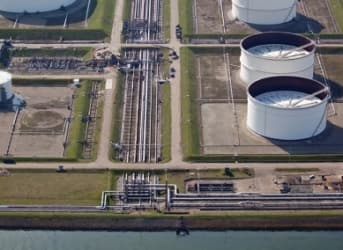The U.S. government released its landmark Annual Energy Outlook on April 14, with some rather bold predictions about the future of oil and gas.
The EIA released the 2015 edition of its report at a Washington conference hosted by the Center for Strategic and International Studies. Here are a few nuggets from the much-anticipated report:
• In its Reference Case, U.S. oil production continues to rise for the rest of the decade, keeping prices from spiking. As a result, the EIA thinks oil prices will stay below $80 per barrel through 2020.
• The U.S. becomes a net exporter of energy in 2019 as higher production combines with lower demand from improved vehicle efficiency
• Shale production peaks and begins to decline after 2020
• OPEC manages to offset falling U.S. production in the next decade with increases in output coming from several Middle Eastern countries
• The EIA is so confident about adequate supplies that it does not foresee oil prices surpassing $100 per barrel again until 2028
• Still, there is a lot of variation among the different scenarios. In its Low Oil Price case, Brent stays at $52 per barrel in 2015, but in its High Oil Price case, it surges to $122 this year
• Electricity from renewable energy increases by 72 percent between 2013 and 2040, with its share of the electricity market rising from 13 to 18 percent Related: Off-Grid Solar Threatens Utilites In The Next Decade

These projections provide some markers for the road ahead, but the EIA is notoriously off the mark when it comes to accurately forecasting what comes next for energy markets. It routinely extrapolates current trends forwards, assuming very little will change.
For example, the estimate that renewable energy will only expand by 72 percent seems wildly conservative. According to Bloomberg New Energy Finance, renewables have actually already surpassed fossil fuels in new capacity additions for electricity. In 2013, 143 gigawatts of new renewable energy were added around the world, compared to just 141 gigawatts for fossil fuels. That will rapidly accelerate in the coming years – by 2030, the world will be adding double that amount each year. Extraordinary cost declines in both renewable energy and batteries will result in dramatically quicker inroads for renewable energy, and make the EIA predictions look silly in the not-too-distant future. Related: Rig Count Data Shows Gulf States Cranking Up Pressure On The U.S.
Just take a glance at past EIA predictions. For example, the Annual Energy Outlook from 2000 predicted that oil prices would reach $21 per barrel in 2010 in its Reference Case, and just $26 per barrel in its High World Oil Price case. Readers may recall that in 2010, despite still shaking off the effects of the financial crisis, oil prices marched above $90 per barrel, and surpassed $100 per barrel the following year, more or less staying above that level for another three years.
To be sure, forecasting is inherently unpredictable and the EIA cannot be expected to incorporate unforeseen events like financial crashes or new wars.
But even current data coming out of the EIA complicates the agency’s long-term predictions. For example, production in the U.S. is expected to fall by 57,000 barrels per day in May, as output in the Eagle Ford, Bakken, and Niobrara dips. With rig counts still falling, that could be just the beginning. It is not as if production will suddenly tick back up in the months following when even more rigs are pulled from the field. The only way that production will be able to rise to the 10.6 million barrels per day that the EIA predicts for 2020 is if oil prices rebound significantly. That is possible, but that would then ruin another EIA prediction – that prices will stay below $80 per barrel through 2020. It is hard for both of those things –rising U.S. production but no real rise in prices – to be true. Related: Top 5 Richest Tycoons In Renewable Energy
Moreover, a whole host of events could upend EIA’s forecast: war, peace, recessions, depressions, shale output falling faster than expected, new shale resources coming online, fast cost reductions for clean energy, or a global treaty on climate change. No one knows what will happen.
With all of that said, the EIA does offer a vital benchmark from which assumptions can be gleaned and estimates can be made, offering insight into the very opaque world of energy. But take predictions about the future with a huge grain of salt.
ADVERTISEMENT
By James Stafford of Oilprice.com
More Top Reads From Oilprice.com:
- OPEC Boosting Production To Keep Pressure On U.S. Shale
- Has The U.S. Reached “Peak Oil” At Current Price Levels?
- Top 12 Media Myths On Oil Prices
















